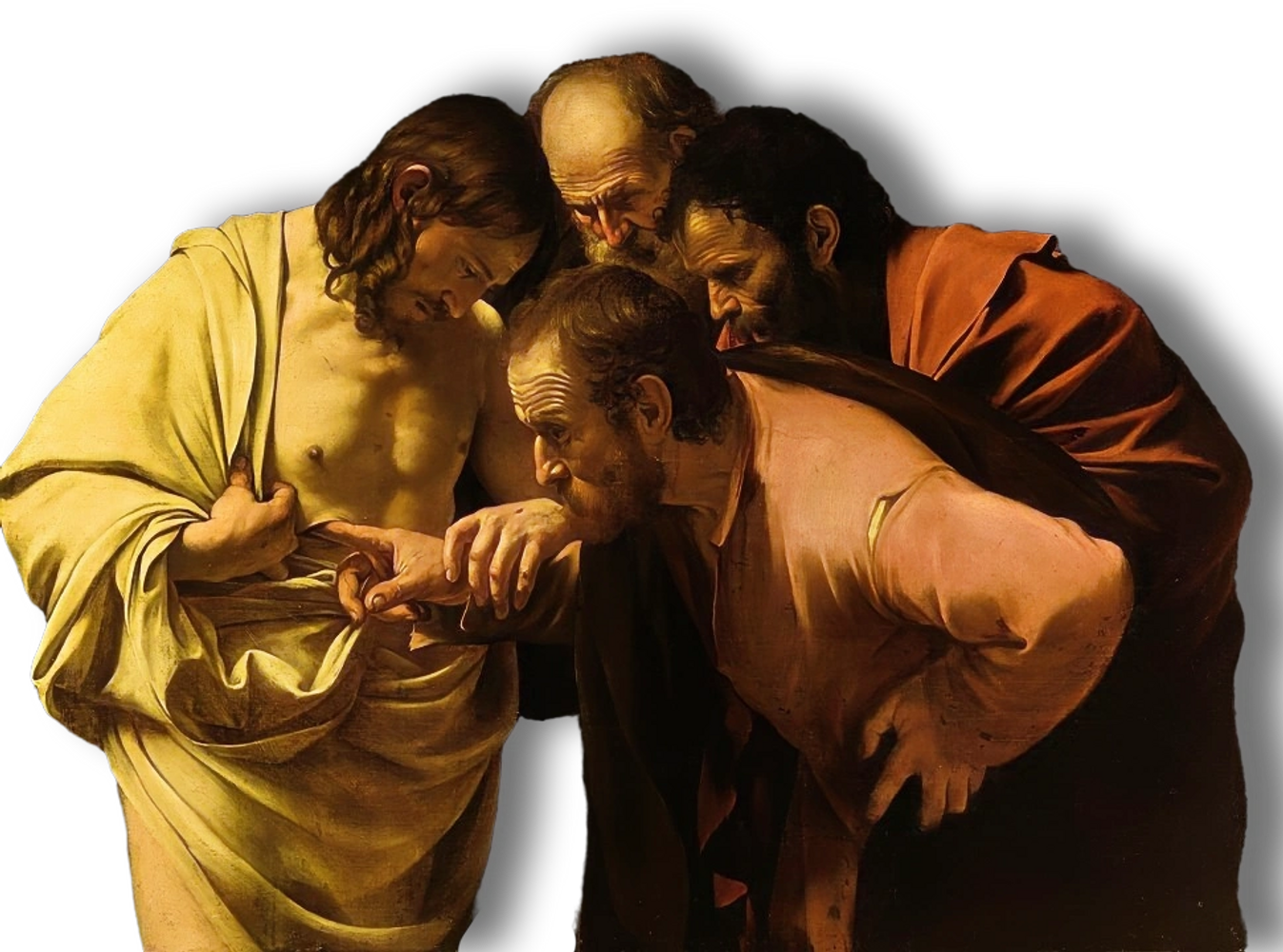

Our Mission
Art Analysis
We will analyse the pictorial technique of the Italian painter called Caravaggio whose paintings are presenting a frontal contrast between light and shadow.
We will focus on the origins and the aftermath.
Pictural Current
Caravaggio often depicted scenes from both the Old and New Testaments in his work, and these powerful interpretations became influential models that many Caravaggisti—artists inspired by his style—later recreated and reimagined.
Most notable Caravaggisti

Artemisia Gentileschi
Artemisia Gentileschi
Artemisia Gentileschi
Gentileschi is considered among the most accomplished 17th-century artists, initially working in the style of Caravaggio.

Louis Finson
Artemisia Gentileschi
Artemisia Gentileschi
Flemish painter, draughtsman, copyist and art dealer and one of the first propagators of Caravaggism in Northern Europe.

Jusepe de Ribera
Artemisia Gentileschi
Jusepe de Ribera
Ribera’s later works show a significant evolution in style while still retaining elements of his Caravaggisti roots.
DISCOVER THE EXTENT OF HIS INSPIRATION



Caravaggio
Who was Caravaggio, and why is his art so famous?
Who was Caravaggio, and why is his art so famous?
Who was Caravaggio, and why is his art so famous?

Caravaggio was an artist who created some of the most dramatic and emotional Christian art ever seen. His paintings were bold, powerful, and full of life. But his personal life wasn’t peaceful—he faced many struggles. Some people wonder if his difficult life influenced the intense feelings in his art, but many experts believe his art and his life were separate.
What makes Caravaggio’s paintings so unique?
Who was Caravaggio, and why is his art so famous?
Who was Caravaggio, and why is his art so famous?

Caravaggio’s art makes you feel like you’re part of the scene. His paintings are bold and emotional, with dramatic use of light and shadow, a style called chiaroscuro (kee-ah-roh-SKOO-roh).
This made his paintings look so real that it felt like the people and objects were popping out of the canvas!
Did Caravaggio ever paint himself?
Who was Caravaggio, and why is his art so famous?
Why did Caravaggio include himself in his paintings?

Yes! But Caravaggio didn’t paint self-portraits like other artists, such as Rembrandt. Instead, he included himself as characters in his paintings. For example, he painted himself as a sick Bacchus (the Roman god of wine), as a boy yelling in pain after being bitten by a lizard, and even as the snake-haired Medusa at the moment she was defeated.
Why did Caravaggio include himself in his paintings?
Why did Caravaggio include himself in his paintings?
Why did Caravaggio include himself in his paintings?

Some people think Caravaggio painted himself because, early in his career, he couldn’t afford to hire models. But even after he became successful, he continued to add himself to his paintings. Maybe it was his way of showing he wasn’t afraid to be part of his art and to break the usual rules of painting.
How did Caravaggio’s art inspire other artists?
Why did Caravaggio include himself in his paintings?
How did Caravaggio’s art inspire other artists?

Caravaggio didn’t just create amazing paintings; he also inspired other artists to think differently about art. He painted people and stories in ways that felt raw, emotional, and real. Instead of making saints and angels look perfect and distant, he made them look like real people with feelings and struggles. This made his art relatable and exciting, and it inspired artists from all over the world.
What were the Caravaggisti?
Why did Caravaggio include himself in his paintings?
How did Caravaggio’s art inspire other artists?

The Caravaggisti were artists from places like Italy, Spain, the Netherlands, and France who loved Caravaggio’s style and wanted to paint like him. They admired how he made his scenes feel alive and added their own twists to his ideas, combining them with their local art styles.
Why is Caravaggio’s art still important today?
Why is Caravaggio’s art still important today?
Why is Caravaggio’s art still important today?
.jpg/:/cr=t:26.04%25,l:0%25,w:100%25,h:47.92%25/rs=w:388,h:194,cg:true)
Caravaggio’s bold and dramatic way of painting changed art forever. He showed that artists didn’t have to follow all the old rules—they could experiment and create art that was exciting and full of emotion. His influence lasted long after he was gone, inspiring generations of artists to push boundaries and tell powerful stories through their art.
This website uses cookies.
We use cookies to analyze website traffic and optimize your website experience. By accepting our use of cookies, your data will be aggregated with all other user data.

